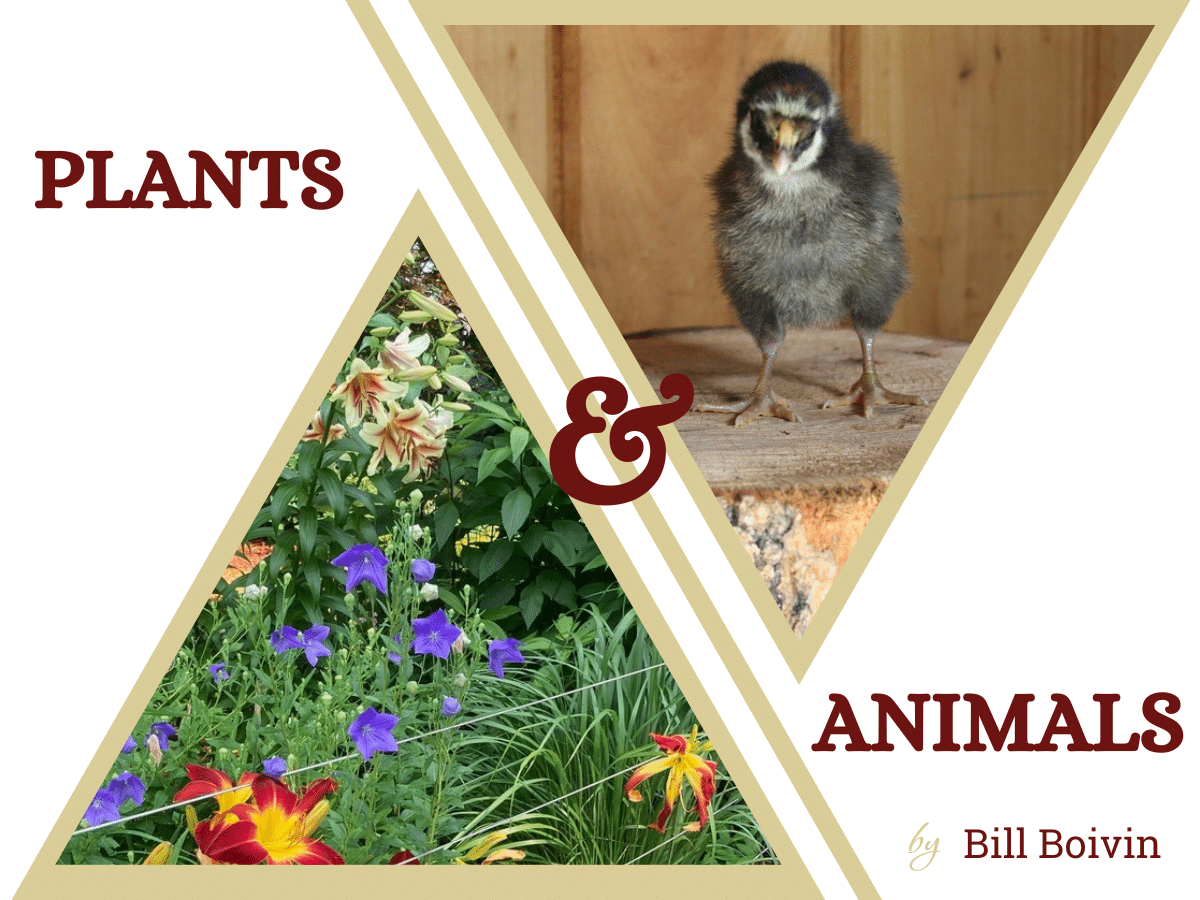Competition and Conflict: An Entire Ecosystem Lives in Your Yard
Competition and conflict are necessary to maintain balance in an ecosystem - even the one in your own backyard.


When you create an environment in your yard that is attractive to wildlife, many animals will want to live there, but not all can fit in. Predators will be attracted as well–animals who already have a home but are looking for a meal. Through competition and conflict, a balance will ultimately be achieved at the macro level in both number of species and number of individuals. But competition at the individual level is necessary to maintain that equilibrium.
When it comes to natural competition, size doesn’t always guarantee victory. Sometimes inner strength and self-confidence prevail. Unlike us humans, animals don’t let thought and logic get in the way of what they can achieve. In martial arts terms, that inner strength is called “ki” in Japanese or “chi” in Chinese.
Why is a 150 lb person intimidated by a much smaller 40 lb dog that is growling and approaching them? Because the dog has no fear, but the person does. You are larger and stronger than that dog, but its ki is stronger than yours. Twice in my life I have been directly charged by an angry, growling dog. Both times, I instinctively charged directly back at them, yelling and waving my arms over my head. Both times the dog stopped in its tracks, turned, and ran. In other words, I matched the dog’s ki and the dog backed down.
I see smaller animals drive off larger ones regularly. Each year, Carolina wrens that settle in my yard are driven away by smaller house wrens. The tiny house wrens will even yell at me to try to steer me away from their nests. Gray squirrels are regularly ousted from my sunflower seed feeder by much smaller red squirrels. The red squirrels are more aggressive and just command a greater presence until the bigger grays back down. However, as in the dog example above, if attitude matches attitude, size usually wins.
All around us, competition and conflict are occurring, and in some instances the encounters are fatal. Consider the mockingbird that chased a fox out of my driveway by persistently dive-bombing it (and making contact several times!), the tiny birds that, flying high in the sky, harass the much-larger hawks that threaten their young, or the garter snake that grabbed and ate a toad in my backyard (a day-long process!).

My chickens are often involved in this competition dance. I once heard distress calls in my coop, which is protected by a chain-link fence enclosure, and rushed in just in time to see a weasel run out. I’d found a chicken dead and gutted in there the week before, probably by the same weasel. Those little buggers can fit easily through the mesh of the fence, and who am I to blame them for taking an easy meal? Previously, I’d lost one chicken to a hawk attack and rescued another by arriving just in time to chase the hawk away from the chicken that was in his grasp.

Conflict between two species may create opportunities for a third, like in the case of a gray squirrel who had lost its head in a likely hawk attack. The encounter between these two animals provided a dozen or more yellow jackets a veritable feast. (Bees are vegetarians but yellow jackets are carnivores. Bees show up at your cookouts for the sweets; yellow jackets are there for the hamburgers and hot dogs.)
One day I saw a crow repeatedly swooping the ground and loudly cawing near my fence. I got binoculars to observe his target. There was an adult rabbit on the ground, bursting with ki. Each time the crow swooped, the rabbit launched herself high into the air, flipped over and slashed her claws at the crow. After several swoops, the crow flew away. My interpretation of this conflict was that this was a female rabbit protecting her babies from crow consumption. Crows are not birds of prey and would not attack an adult rabbit. But as opportunistic feeders, crows would eat newborn bunny kits.
One of the coolest conflicts I’ve seen occurred while I was in my yard raking leaves with my border collie, Otis, laying nearby. Reacting to a sound, we both turned to see two male sparrows fighting in mid-air about 6 feet off the ground. It was a flying ball of feathers and fury. The fight escalated until they gave up even trying to fly, crashing to the ground not 6 inches in front of Otis’ nose. Otis and I both watched as they kept fighting for another full minute, oblivious to anything else. Eventually they flew away in opposite directions. In martial arts terms, this battle demonstrates both ki and focus. Once one steps into the dojo, everything else must be left outside. Full concentration should be given to every technique, especially in a fight. Full focus does not allow any fear or uncertainty to exist. All that is left is your training and your ki. If you achieve that state in a sparring match, your full ability will prevail. Win or lose, you will know you have given your best. I do not need to know who “won” the sparrow battle to know that each bird’s ki allowed it to perform to the best of its ability.
Remember, you are not the only family living on your property. You are but one of the many species in your property’s ecosystem. As such, you play a role in its natural balance: raking, mowing, and cutting affect food and housing. What you plant and what food you put out also determines the balance. Children and pets are part of your yard ecosystem as well. Try to find a balance that provides for your needs and desires but also includes as many of your cohabitants as possible. Treat your exterior property just as you would the inside of your house: Provide food, water, shelter, and safe places to raise young. Creating a diverse balance will allow observation and enjoyment of the remarkable wonders of nature, right in your own backyard.
Bill Boivin is a scientist, retired from 30 years of active duty with the United States Public Health Service. He is a Burlington Town Meeting Member and Conservation Commissioner. He and his wife, Jane, grew up in Lynn and now live in Burlington with their 2 mini dachshunds, 7 chickens, and Maya, a ball python. Bill and Jane have shared a love of nature, gardening, and wildlife for over 50 years. They have fostered, healed, raised, and loved a remarkable variety of animals in their time together. Learn more about Bill.




